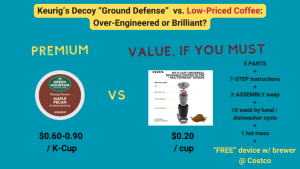By: Armin Kakas
This is a guest post from our partner Armin Kakas. It originally appeared on Armin’s blog with this version edited for consistency. To learn more about our partnership please read our partnership announcement.
The importance of quantifying impact of price changes and promotional investments
With continued data proliferation and the democratization of popular Machine Learning methods among the data analyst community
knowing your Price and Promotional elasticities at the Customer-Product level is fundamental to Finance, Sales and Revenue Management.
How many of us have been in situations where:
- We are giving away too many promotions and discounts to customers.
- Our pricing strategy is to index to competitor prices.
- Our price investments (promotions, discounts, rebates) are growing faster than Operating Profit (or worse, Price investments grow, EBIT declines).
- Margins and Net Revenue are substantially lower than what they could be.
Analytical approaches to estimating price elasticities
Below is a short visual guide describing:
- Business outcomes enabled by Price and Promotional Elasticities (PPE).
- Popular data science techniques to estimate PPE using a good/better/best approach.
Elasticities are derived from Demand Models (typically predicting Unit Sales).
If you are serious about modeling PPE in your organizations, please remember the following five rules to ensure you have a robust Demand Model – and an accurate Price Elasticity:
- Collaborate with internal experts as you build the model: have an initial hypothesis about what other variables besides Price and Seasonality influence Unit Sales. Afterward, carefully vet your model with cross-functional leaders in Sales, Marketing, Supply Chain, and Finance.
- Choose simplicity over sophistication: if you have an 80% accuracy using a Multiplicative Regression Model with six variables and an 82% accuracy using Random Forest, choose the former. There is a time and place for choosing Machine Learning over traditional Regression approaches, as outlined briefly on slide 2.
- Pay attention to outliers: always do some exploratory analysis/summary statistics to understand the variance in your data. If needed, normalize your data or exclude gross outliers to ensure the accuracy and stability of your Demand Model.
- Pay attention to multi-collinearity: for most Demand Models, Price and other variables will be highly correlated. If needed, employ a model regularization technique or a tree-based ensemble model (e.g., Random Forest or Gradient Boosting) that is naturally great at handling outliers.
- Test the effectiveness of your model: compare new in-market results with your model predictions to ensure your Demand Model (and Price Elasticities) remains accurate against previously unseen sales results.





